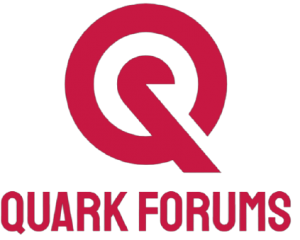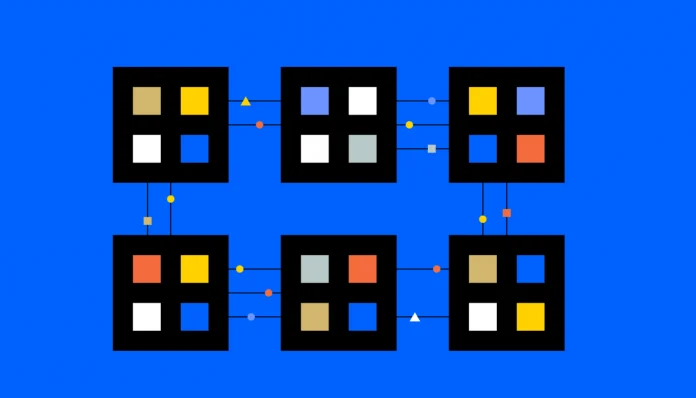Blockchain technology has been trending in recent years. This technology allows a secure way for individuals to deal directly with each other through a highly secure and decentralized system, without an intermediary. In addition to its own capabilities, machine learning can help in handling many limitations that blockchain-based systems have. The combination of these two technologies (Machine Learning and Blockchain Technology) can provide high-performing and useful results. In this article, we will understand blockchain technology and explore how machine learning capabilities can be integrated with a blockchain technology-based system. We will also discuss some popular applications and use cases of this integrated approach. The major points to be covered in this article are listed in the table of contents given below.
Table of Contents
Register for Data & Analytics Conclave>>
- Blockchain Technology
- Machine Learning in Blockchain-Based Applications
- Applications of Machine Learning in Blockchain
- Use Cases of Machine Learning with Blockchain Technology
Now, let us start with understanding blockchain technology.
Blockchain Technology
The basic idea behind blockchain technology is to decentralize the storage of data so that it can not be owned or managed by a particular actor. It can be updated by a transaction sheet where once a transaction is noted in the sheet it can not be modified. Subsequently, the upcoming transaction needs to be verified before entering the sheet by a trusted party. The only difference is that the new set of records is checked by the decentralized architecture of nodes. There is not any specific centralized party needed to verify the records.
Although the mechanism of blockchain technology is complex and can be considered as the set of various blocks which are linked together where the flow of data is maintained. In this chain, the present block holds the hash of its previous block and so on. Using this kind of system blockchain mechanism makes itself traceable in terms of data and transactions. Instead of this, they are resistant to changes where the older blockchain cannot be changed and still there are any changes performed in the block which means that the changes in their hash. A blockchain consists of three important components in it which are listed below
- Blocks: As the name suggests that blockchain is made up of many blocks where every block has three basic elements:
- Data
- Nonce which is a 32-bit whole number. It is randomly generated with the generation of a block, which causes the generation of block header hash
- Hash which is a 256-bit number that is very small and connected to the nonce
Whenever in a chain a block is created nonce generates the cryptographic hash which is signed and tied with the data in the block. Mining of the data from the block makes the nonce and hash be untied with the data.
- Miners: Miners are responsible for creating new blocks on the chain through a process called mining.
As explained above, every block consists of its unique nonce and hash, and the hash in the present block references the hash of the previous block connected in the chain, which makes mining of a block difficult, especially on large chains.
Miners require special techniques to solve the complex mathematics in finding a nonce that is responsible for the generation of an accepted hash. Because the nonce is only 32 bits and the hash is 256, there are roughly billions of possible combinations of nonce and hash that need to be mined until the right combination is found. Miners with the right combination are often called as having a “golden nonce” and that makes a block to be added in the chain.
Since finding golden nonces requires a huge amount of time and computing power. It becomes difficult to make changes in the blocks and this makes the blockchain technology resistant to the changes
- Nodes: As we have discussed, one of the most important concepts behind making blockchain is to decentralize the data in different blocks. So not a particular one can own all the information. This makes it possible to make the chain owned by various people or organizations. Nodes can be considered as a device that holds the copy of the blockchain and makes the chain or network functioning in the required directions.
Every node owns a copy of the blockchain and the network is set to approve any newly mined block for the chain as updated, trusted, and verified. Transparency of the blockchains makes it treacle to check or view every action in the ledger. Each participant of the chain has a unique identification number that shows their transactions in the chain.
The below figure represents the traceability and resistance to change qualities of any blockchain with its structure.

There can be several applications of blockchain technology some of them are listed below:
- Secure data trading
- Cross border money transfer
- Real-time IoT operating system
- Supply chain and logistic monitoring
- Cryptocurrency exchange
- Personal identity security
Machine Learning in Blockchain-Based Applications
Machine learning algorithms have amazing capabilities of learning. These capabilities can be applied in the blockchain to make the chain smarter than before. This integration can be helpful in the improvement in the security of the distributed ledger of the blockchain. Also, the computation power of ML can be used in the reduction of time taken to find the golden nonce and also the ML can be used for making the data sharing routes better. Further, we can build many better models of machine learning using the decentralized data architecture feature of blockchain technology.
Machine learning models can use the data stored in the blockchain network for making the prediction or for the analysis of data purposes. let’s take an example of any smart BT-based application where the data is collecting by different sources such as sensors, smart devices, IoT devices and the blockchain in this application works as an integral part of the application where on the data the machine learning model can be applied for real-time data analytics or predictions. Storing the data in the network of blockchain helps reduce the errors of the ML models because the data in the network will not have missing values, duplicates, or noise in it which is a primary requirement for the machine learning model for giving the higher accuracy. The below image is a representation of architecture for machine learning adaptation in a BT-based application.

Benefits of the Machine Learning Integration in Blockchain-Based Applications
There can be many benefits of using machine learning models in blockchain technology some of them are listed below:
- User authentication of any authorized user is easy when they are trying to make changes in the blockchain.
- Using ML we can make BT provide a high range of security and trust.
- Integration of ML models can help ensure the sustainability of terms and conditions which were agreed before.
- We can make an ML model updated according to the chain environment of BT.
- Models can help extract good data from the user end. Which can be computed continuously and based on that we can give rewards to the user
- Using the traceability of the BT we can also evaluate the hardware of different machines so that ML models can not diverge from the learning path for which they are assigned in the environment.
- We can implement a real-time trustworthy payment process in the blockchain environment.
Applications of Machine Learning and Blockchain Integrated Systems
There can be many applications of machine learning and blockchain integrated systems. A few of them are listed below:
- Enhanced Customer service: As we all know that customer satisfaction is a primary need of any organization which is serving the customers using a machine learning model or a kind of AutoML framework on a Blockchain-based application we can make the service more efficient and automated.
- Data trading: Companies using blockchain for data trading across the world can make the service faster using the ML models in the blockchain. Where the work of the ML models is to manage the trading routes of the data. Instead of this, we can also use them for data validation and encryption of the data.
- Product manufacturing: In the present scenario most of the big manufacturing units or organizations have started working with blockchain-based procedures to enhance the production, security, transparency, and compliance checks. Integrating ML algorithms can be more helpful in making flexible plans at specific periods for maintenance of the machinery. Instead of this integration of ML can help in making the Product testing and quality control automated.
- Smart cities: Nowadays smart cities are helping in improving the living standards of the people where machine learning and blockchain technologies play a crucial role in making smart cities for example smart homes can be monitored by machine learning algorithms and device personalization which is based on the blockchain can improve the quality of livelihood.
- Surveillance system: Security is an important concern of the people because of the increasing crime rate in the present scenario. ML and BT can be used for surveillance where BT can be used for managing the continuous data and ML can be used for analyzing the data.
Use Cases of Machine Learning with Blockchain Technology
In today’s scenario, there are various big and small companies are there who have implemented both of the techniques either integrated with each other or integrated in different work of a system which is working to provide a single output. A few of the use cases of machine learning and blockchain technology are listed below:
- IBM in collaboration with Twiga Foods launched a blockchain-based microfinancing strategy for food vendors. Where they have successfully implemented some ML techniques. where purchased data using blockchain from mobile devices is processed using ML techniques to determine credit scores & predict the creditworthiness of different users. So that the lenders can facilitate lending and repayment using blockchain technology.
- Porsche, a popular car manufacturing company, is one of those early adopters of technology where ML and BT are integrated to improve automobile capabilities and safety. The company uses blockchain technology to trade the data more securely, offering its users peace of mind; by facilitating them with parking, charging, and third-party temporary access to their car.
- A New York-based company is also using a blockchain-based innovation to enable energy generation and trading for local communities. The technology uses microgrid smart meters working based on machine learning models and smart contracts based on blockchain to track and manage energy transactions.
- Some other companies related to the food industries like Unilever and Nestlé are using blockchain and ML to deal with food disasters like wastage and contamination of food to maintain their supply chain in an efficient way.
Final Words
In the article, we had an overview of blockchain technology with its components and applications. After that, we explored the opportunity of integrating block technology with machine learning. There are several benefits and applications of this integration where we can use both of them together to cover up their drawbacks. There are many applications and use cases of their integration that we covered in this article.














